During the pandemic, everyone seemed to come up with something wasteful
dumb frivolous to spend time on. For a ton of people, it was sourdough.
For me, it was an extraordinarily convoluted garage door alert system. To
each their own.
Growing up, my dad always had a project — no once-in-a-hundred-years pandemic required. As a former professional mechanic, that project was often a car. But he went through phases: an audiophile’s stereo system, refurbishing pinball machines, an absolute obsession over his diet, wiring the house for ethernet in the mid-90s, and so on.
I think my acorn didn’t fall far from the tree. While I don’t need a project in the same way he does, I do find myself working on something silly from time to time. Often with a dedication that is borderline obsessive.
This year, that project has been the Tailgate Tub™.
Well over a decade ago, I decided to get my wife Erin (and me) season tickets
to UVA football. The UVA campus grounds are about an hour from
home, which makes a day trip for a football game far easier than it is for
my alma mater. I thought we’d do it for the year, and that would be that.
As it turns out, we’ve been season ticket holders for over ten years now. Oops.
Over the years, our tailgates have changed considerably. Led by our dear friend Brian, our beginnings were humble. A folding table, an orange and blue Jambox, and some food. Shortly, Brian got a grill, and his ability to cook in a parking lot progressed from basics to genuinely impressive fare. Several years back, Brian decided to really up our game, and we transitioned from amateur level to professional: he bought a generator. His generator, and our TV, and suddenly this tailgate became pretty serious business.
For several years, the combination of the TV and an over-the-air antenna were more than enough. Eventually, particularly after a long stretch of noon games, we realized we wanted to be able to watch things that weren’t carried over-the-air; most especially, ESPN.
Last year, thanks in part to our desire for access to more TV channels, the tailgate got a bit out of control. Really, it’s all Quinn’s fault. But I’m getting ahead of myself.
After realizing we’d really prefer to have access to the whole of cable TV, it occurred to me that this is actually quite workable. At home, we watch TV using the incredible Channels app. Channels works in concert with my HDHomeRun to replace my cable box with an app. An app that works on my Apple TV, iPhone, and [cellular] iPad. In combination with a hilariously expensive dongle, we could watch our home’s cable on the tailgate TV, via the iPad or iPhone.
But we also need music.
Yes, we could just use a bluetooth speaker, but that’s not as refined as it could be. And further, it requires someone’s phone to play the music. And drain its battery. Isn’t there a better way?
Enter Quinn Nelson. This video of his absolutely incepted me, and within minutes of finishing it, I had a travel router on order. This travel router is capable of slurping up internet from ethernet, as you’d expect, but it can also rebroadcast a wireless connection (useful for hotels), or tether to an iPhone/iPad/MiFi and share that connection. It occurred to me that if I set the travel router to have the same SSID and password as home, all my devices would think they’re at home and be completely content. Including my Sonos Move. Thus, it can handle music playback entirely on its own, no phone involved. Solid.
But wait — there’s more! If I already have a travel router at our tailgate, that means I have Wi-Fi and ethernet available for use. That means that it’d be trivial to add an Apple TV to the mix. Which would have the advantage of letting me change the channel via remote control, rather than having to get up and tap around on the iPad or iPhone connected to the TV. Win/win.
So, as of the end of 2023, our tailgate now includes the following:
- Generator
- Television
- Travel router
- Apple TV
- Sonos Move
This is pretty great, but it’s a lot of cabling. Cabling that needs to get set up and torn down every time we’re at a tailgate.
Could we do better?
Yes. We can do better.
During this off-season, I self-assigned a new project: The Tailgate Tub™.
It seemed to me that the connections are consistent each week:
- Router ↔ iPhone (or iPad) for internet[1]
- Router ↔ AppleTV via ethernet
- Power → router
- Power → AppleTV
- Power → TV
A lot of this could be handled in advance, if I can transport everything as a unit. What if I could put most of this inside a portable box/tub of some sort, and take the tub to/from tailgates? After a bit of planning, I landed on this wiring diagram:
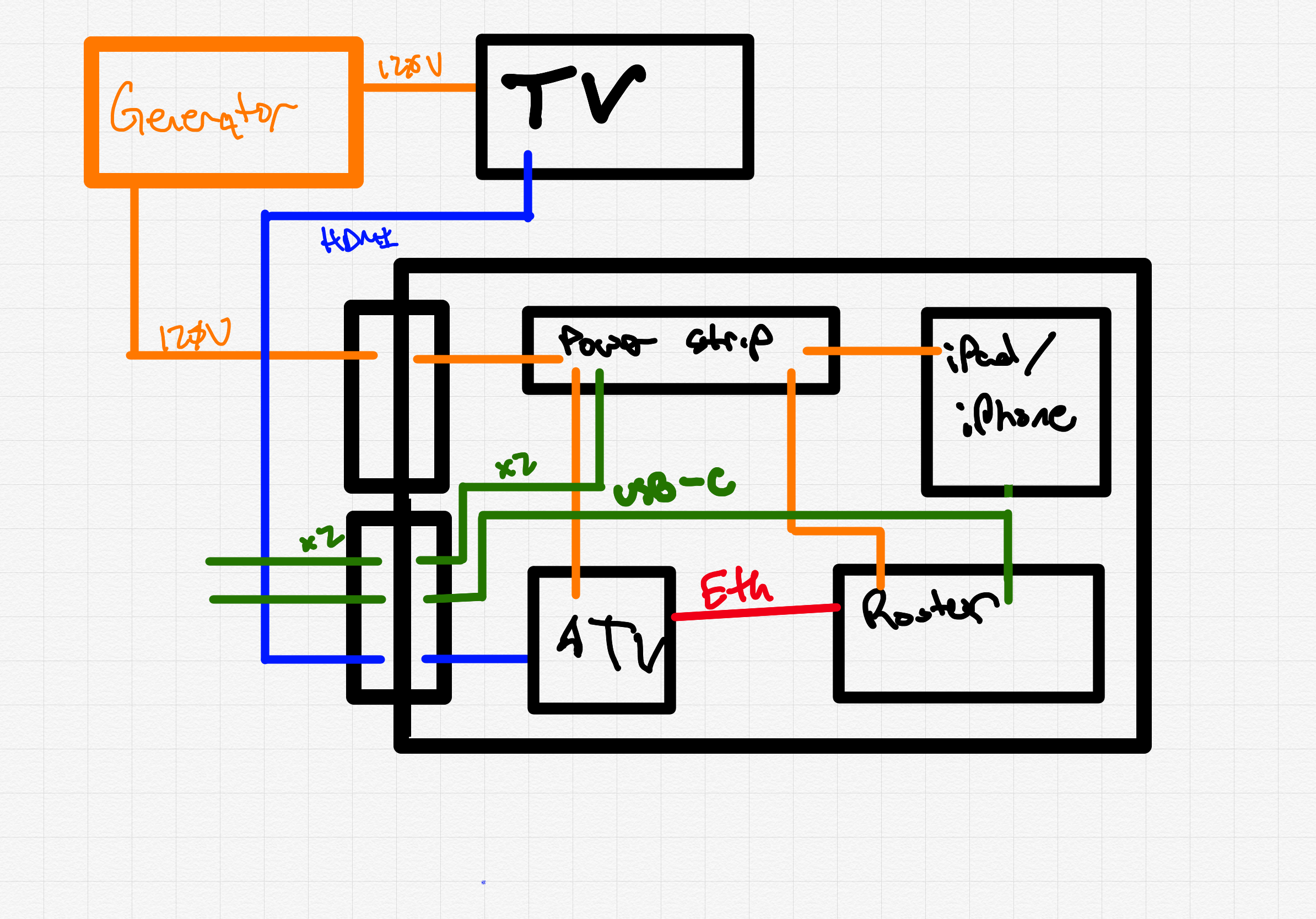
Something like the above should work.
So this — my Tailgate Tub — has been my project for the football off-season. The Tailgate Tub is a portable container that has most of the electronics we need wired internally, with convenient connections for everything else externally. A combination of some keystone jacks and single-gang faceplates could get the low-voltage connections sorted. A marine inlet could handle the high-voltage.
I figured a couple of one-gang three-keystone “outlets” would do the trick:
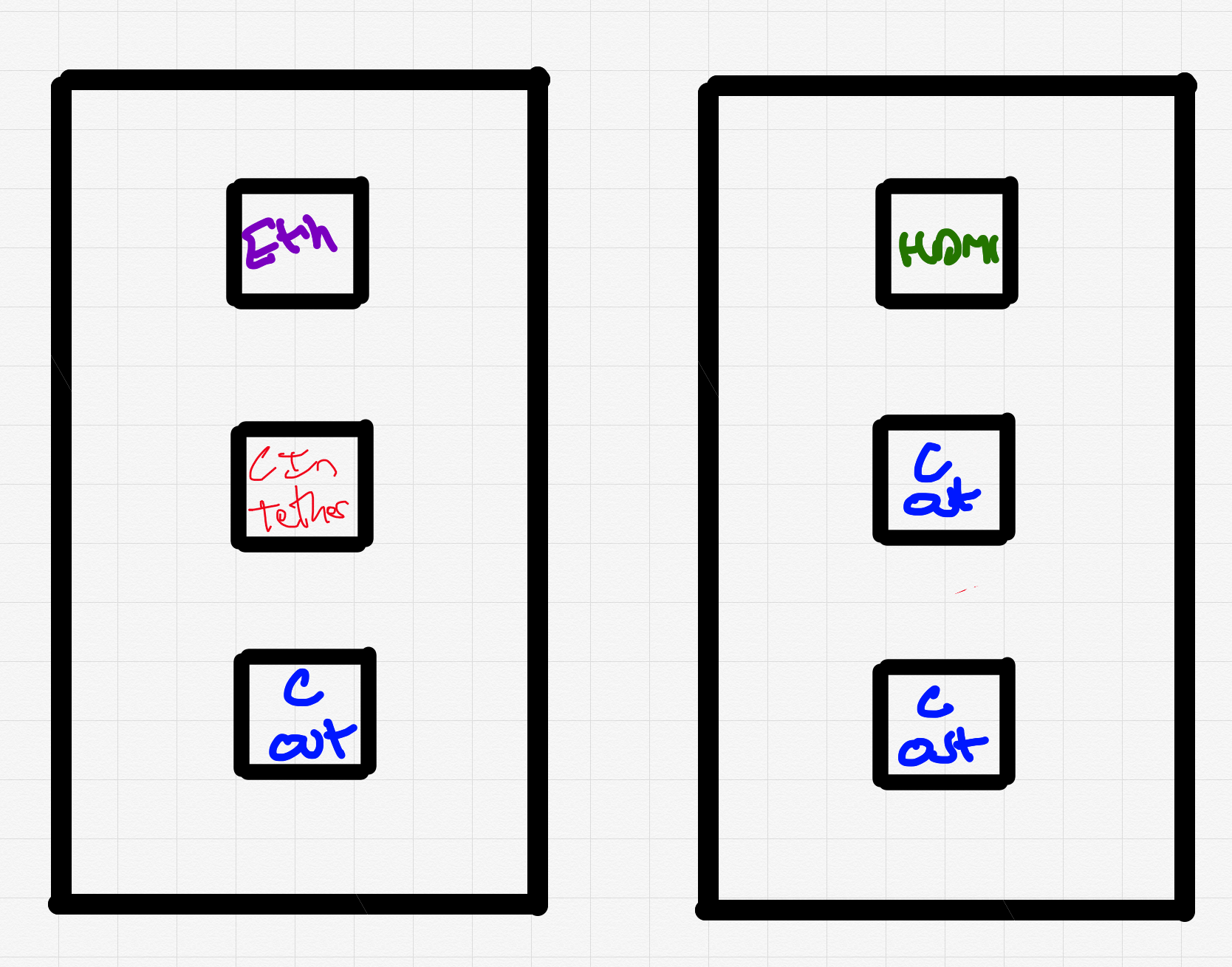
The two keystone panels are in service of:
- Ethernet, in case I need to connect an iPad/Mac for diagnostic purposes
This will almost certainly not happen at a tailgate but will be convenient at home - USB-C in, which would be connected to the travel router, to provide internet
- HDMI, which would be connected to the TV, and internally would be driven by the Apple TV
- 3× USB-C power for charging devices if necessary
These are driven by a USB-C charging “block” and can easily be connected to a USB-C phone, or an older iPhone using a USB-C ↔ Lightning cable
The tub itself is a hand-me-down Rubbermaid from, of all people, my dad, actually. I used a Dremel to cut two holes, one per outlet batch. Here it is after the first one was cut:
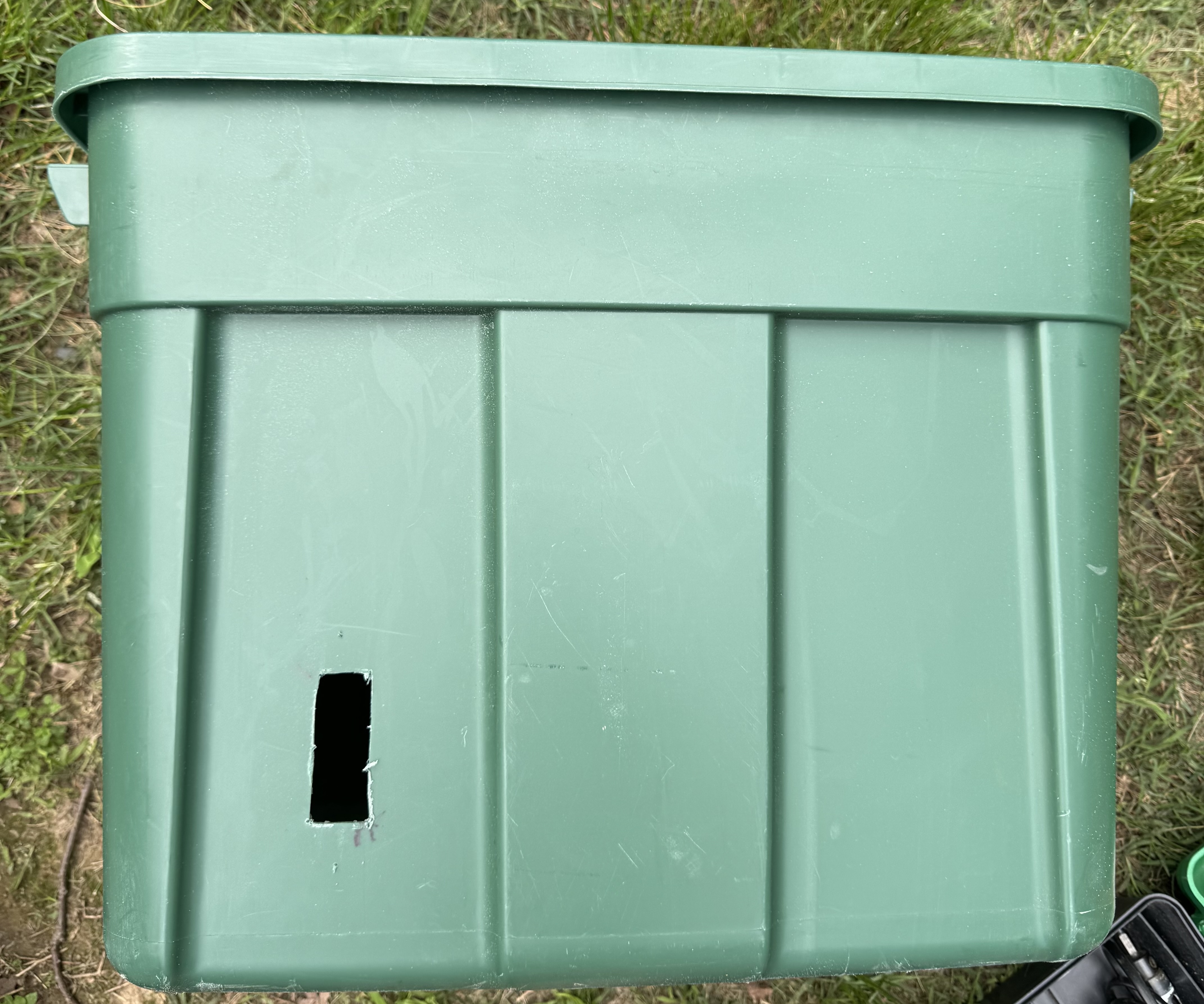
I also used a hole saw to cut a hole for a connection to “shore” power; this will be connected to the generator using a standard extension cord:
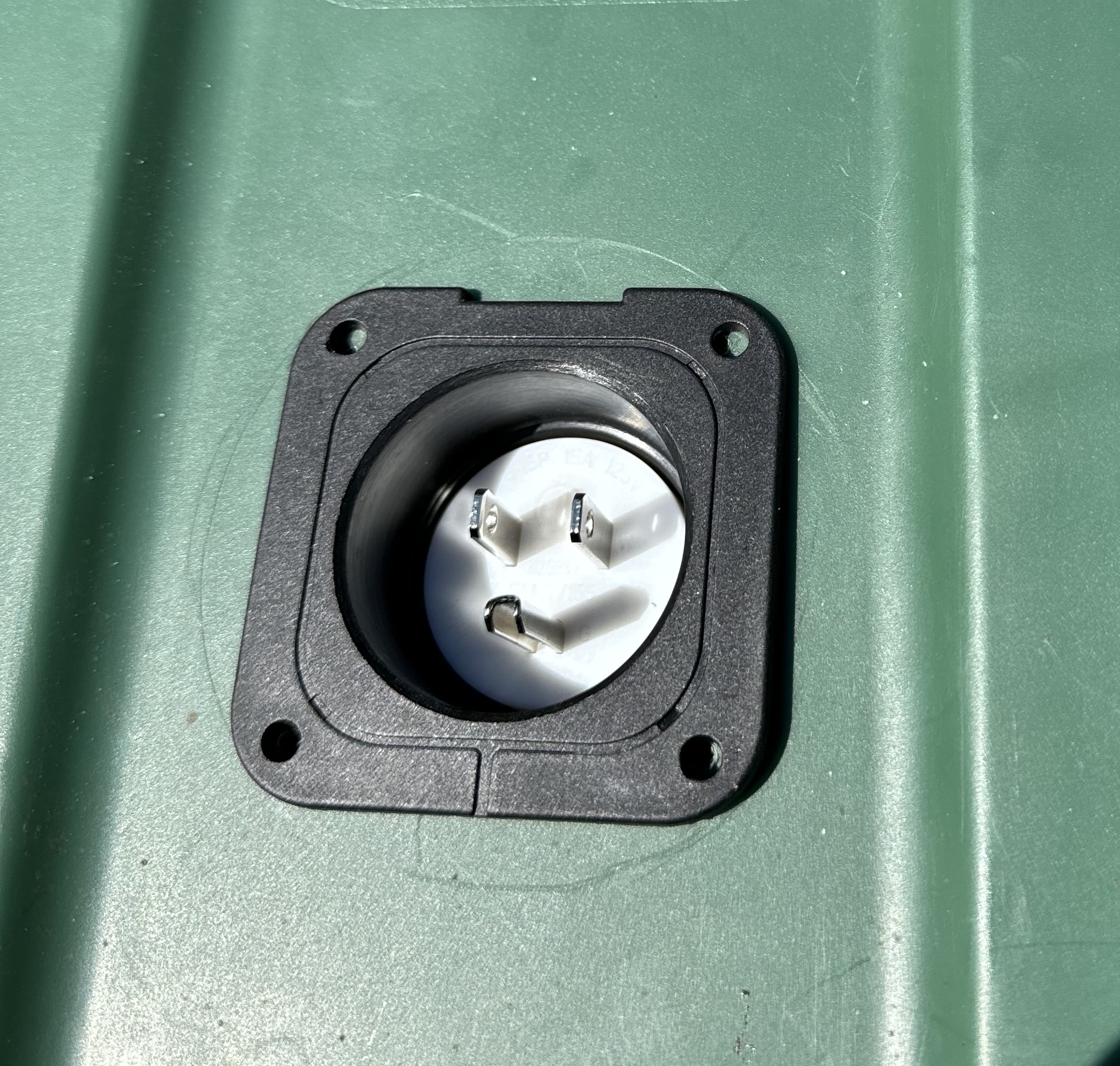
Several coats of spray paint later, and we now have a completed Tailgate Tub.
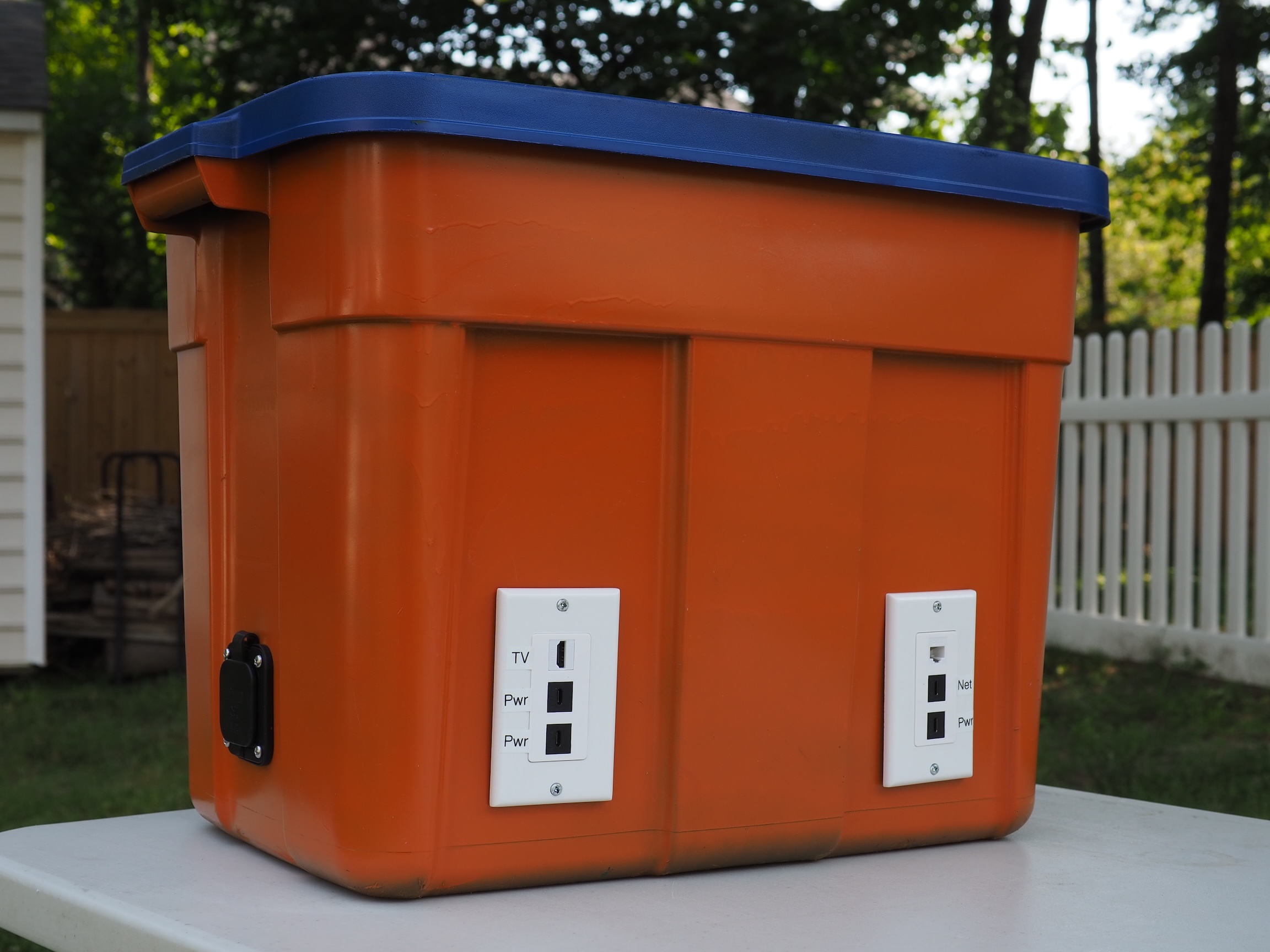
But could we still do better?
We could still do better.
Brian’s generator is very fancy — it’s a Honda inverter generator, producing a pure AC sine wave to keep our electronics safe. It’s quiet, fuel-efficient, light for what it is, and darned near maintenance-free.
It is also not silent, and does weigh ~50 pounds. It’s also smelly — no matter how fuel-efficient it is, it still burns gasoline and makes exhaust fumes. That means we need to cart a couple of long extension cords with us, so we can park the generator far away from our tailgate. These cords can be tripping hazards… especially, uh, towards the end of a tailgate. 🥴
As I was thinking about making our tailgates better and more efficient, I remembered the power problems Jason had a few years back. And I remembered that he solved his issues by getting a big-ass battery that had AC outlets on it.
With that in mind, since late last year, I’ve had my eye on a replacement for the generator, in the spirit of what Jason bought.
I had done some testing on the last tailgate of the year, to see how much juice I would need:
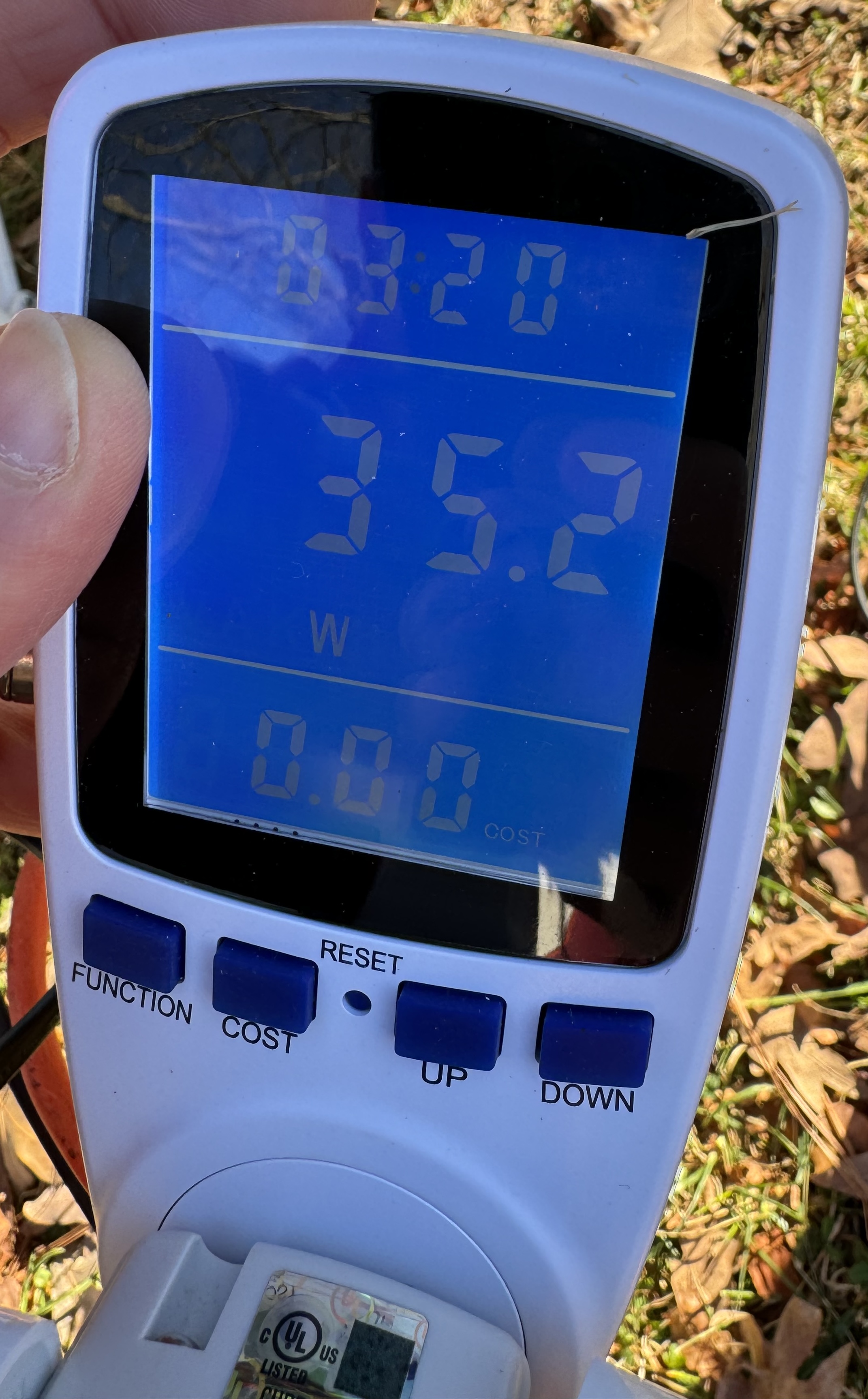
My thought is that I would need enough power to run a ~40 watt tailgate for about ~4ish hours, so roughly 160 Watt-hours at a minimum.
Thanks to an uncharacteristic supply of patience, and CamelCamelCamel, I was able to snag a Bluetti AC70 on a killer deal: $430 at the time of writing. This model has a 768 Watt-hour battery, which should be quite a bit more than I need for our typical tailgate.
Having the portable power station has several advantages:
- Runs very quiet — it has fans but no engine
- Since it runs nearly silent, we can station it under the serving tables
This eliminates the need for a couple of 50-foot (15m) extension cables - It’s far more environmentally-friendly
- It doesn’t require gasoline
- At 20-ish pounds, it weighs roughly 30 pounds less than the generator
So, all told, here’s a backyard demonstration of the setup:
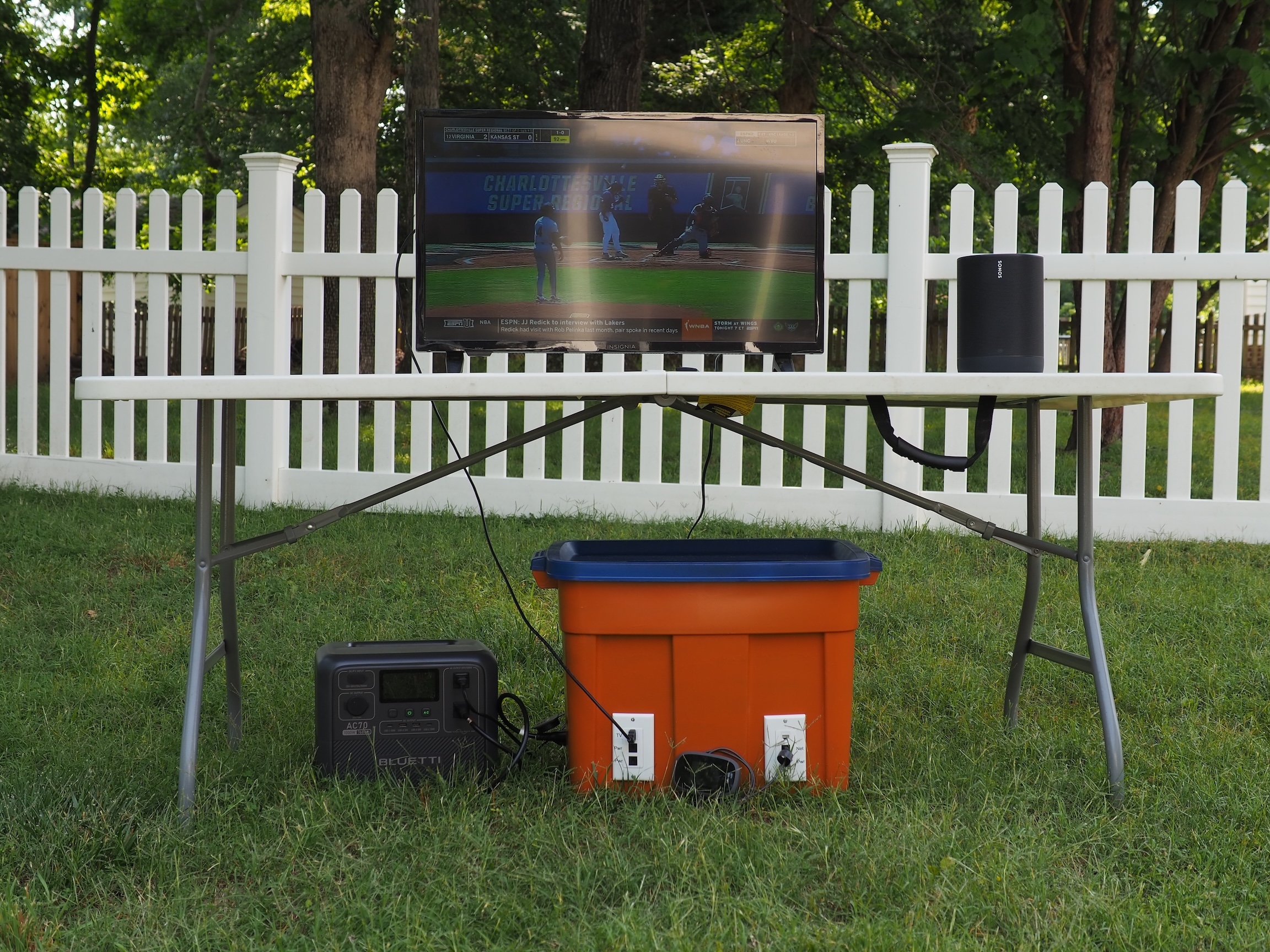
And here’s a close-up of the Bluetti and the tub, sitting in our [tall] grass:
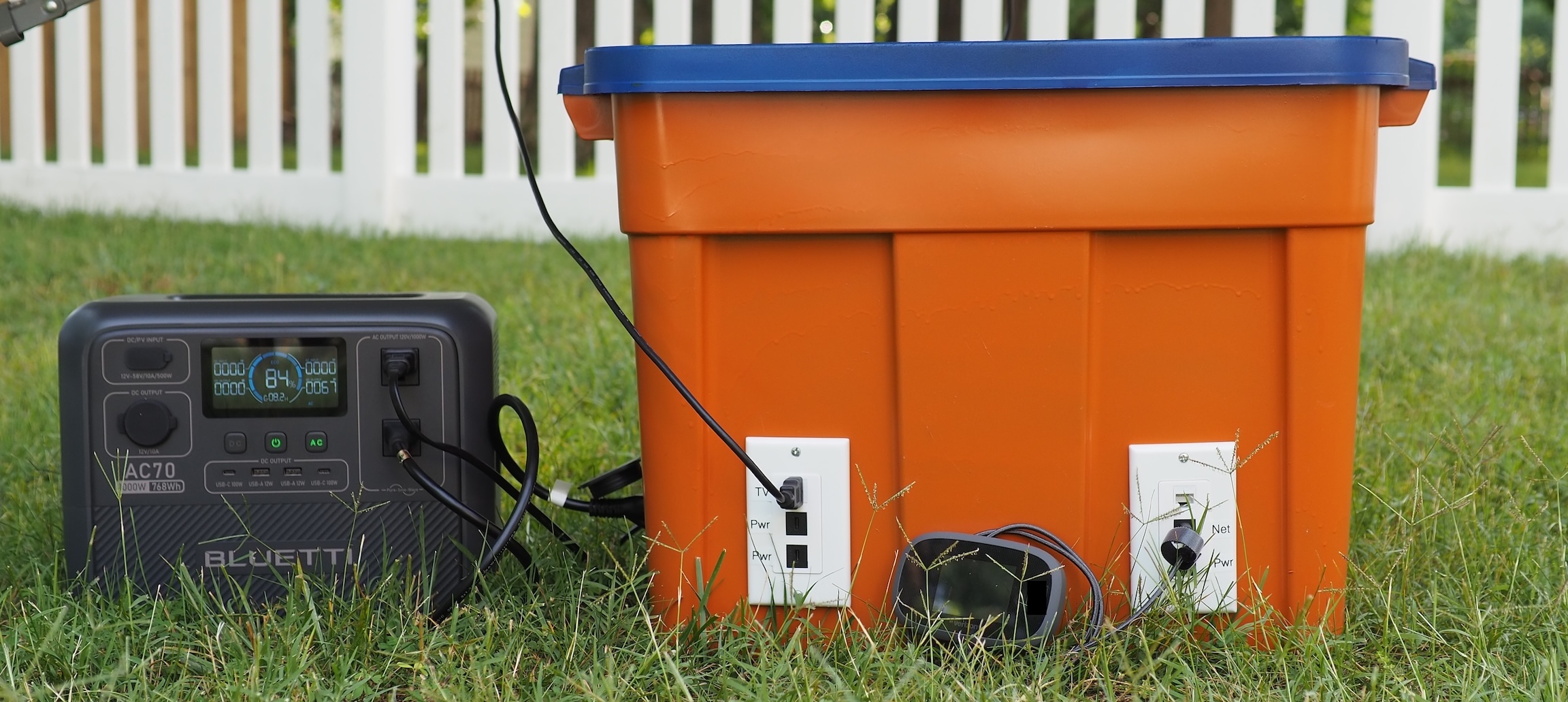
And the inside, before Stephen guilts me into improving my wire management:
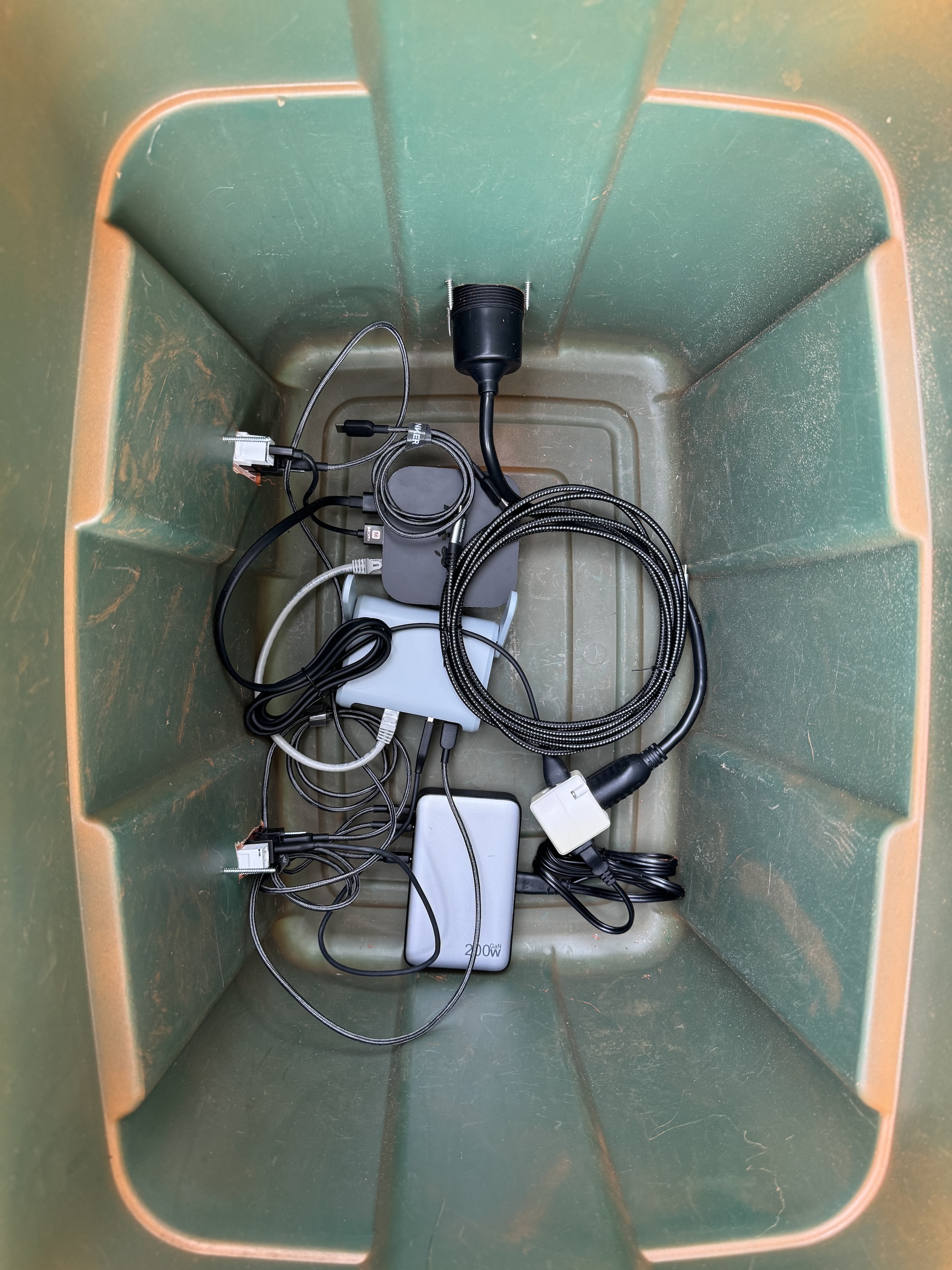
The tub is too big for just the electronics within it, but we’ll put other tailgate supplies in the tub as well. I’ll have to fashion some sort of shelf to put down above the electronics, but that’s Future Casey’s problem.
I’m pretty damn pleased, if I do say so myself.
Though I can absolutely use my phone or iPad to serve internet, it turns out that our local library will actually let you check out a T-Mobile hotspot just like you could a book. And a neighboring library — which has reciprocity with our own — will loan Verizon hotspots. So my hope is that for a lot of this season, we can borrow some hotspots and slurp up that internet instead of my limited tethering allotment. ↩